
Worldwide Water Shortage:
Growing Food in the Desert
Unlike many global problems today, the drinking water shortage has clear solutions. Most of the world’s fresh water use is not for drinking, but for agriculture—perhaps as much as 80%—making agriculture the most promising focus for water conservation.
The world’s most fertile agricultural region, the Central Valley of California, best exemplifies the problems of agricultural water use. It has the largest amount of the highest-grade soil on the planet, the sun shines about 300 days a year, and the climate enables growing more than 230 different crops. The problem is that for more than half the year it hardly rains at all, so water for crops must be drawn from melting snow in the Sierra Nevada mountains to the east or from far distant rivers.
In recent years California has suffered historical levels of drought, so conservation has received a great deal of attention—but solutions remain elusive. Many of the farms, vineyards and orchards of the Central Valley irrigate their crops the same way Mesopotamian farmers did 7,000 years ago—by flooding their fields and losing much of the water to evaporation. For some other crops, giant sprayers shoot water into the air to fall like rain on days that are sunny, hot, and dry, resulting in even more evaporation loss. “Evaporation” may not sound like a serious problem, but evaporation losses can easily exceed one third of the available water.
It takes one gallon of water to grow one single almond.
And it’s not just the way that water is used, it’s what it is used it to grow as well. Farming is a business, more so in California than many places. Almost all the world’s almonds come from the Central Valley and are California’s most profitable crop, but it takes one gallon of water to grow one single almond. And almonds are not the only high-water use crop in California. Rice is grown in large, flooded “rice paddies,” and alfalfa uses the most water of all – more than twice as much as almonds. Alfalfa is grown as a feed crop for cows and when water and water-intensive crops are used for dairy and meat, the water use multiplies exponentially: delivering one pound of beef to the dinner table requires as much as 1,800 gallons of water.
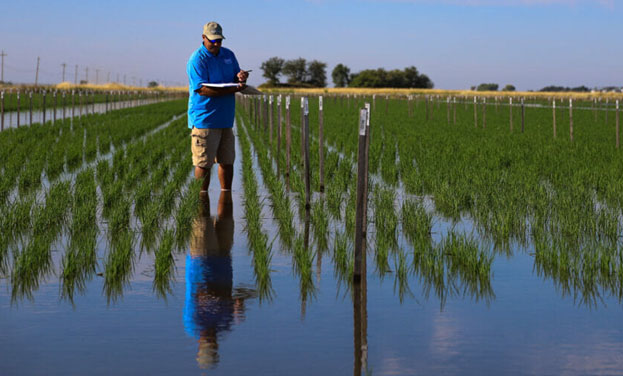
Large corporations now control most agricultural enterprise in California and enjoy government-subsidized water rights established long ago. These subsidies were intended for family farms, so agricultural corporations pay much less than the true cost of the water delivered to them. Residential customers pay ten times as much or more than these businesses pay for water. The subsidies cost the government many millions of dollars a year and make it cheaper for farms to squander water than to conserve it. On the farmers’ part, decades-old water compacts require farmers to “Use It or Lose It” – if they don’t use all of their allotment in a year, their water allotment may be reduced in the years that follow.
Replacing flood irrigation with drip irrigation could cut water loss by 50%
Legal rights to water are grounded in practices from 150 years ago and long upheld in court. Any change in how water is shared threatens the profit of those who use lots of water. Improving water use faces technical challenges too—for example, replacing flood irrigation with drip irrigation could cut water loss by 50%, but widely used mechanized harvesting can damage the drip equipment and drought-thirsty rodents often chew through the lines to get to the water inside. Drip irrigation is expensive to install, so small farms tend to avoid it and agribusiness lobbies the state to pay instead for increase its share of water allotments.
Since climate change will reduce the snowpack in the Sierras by one third or more, changes to agriculture in the Central Valley are inevitable. But cooperation, while at times itself in short supply, can drive great advances in battling our water shortage crises. In the words of Thomas Tebbs, who helped negotiate successful water sharing in the contentious Yakima Basin watershed, “Everyone can’t get everything they want. But if they can get something, that’s really the basis of the plan.” Today’s water conservation requirements, along with the many lessons learned from past infrastructure projects and their consequences, mean that reality of water planning today is very different from the past.
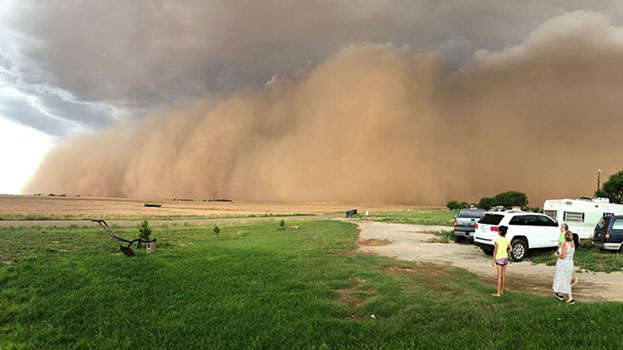
The problems of California agriculture are far from unique to California or to the US. The climate of India, for example, has entered a condition of frequent and repeating drought. As in California, most of India’s annual rainfall occurs in only four months of the year, so much farm irrigation is drawn from aquifers. Groundwater extraction for agriculture has reached such a level that wells in very large populous areas will be completely dry in about fifteen years. Yet India exports a great deal of water-intensive and government-subsidized crops like rice and sugar. In one sense, this is the equivalent of exporting groundwater, and it results in the massive and permanent loss of this resource.
What to Do
To adapt to fresh water scarcity, our collective actions will matter most. The threats will not be resolved until governments take them seriously, so don’t vote for politicians who deny the reality of climate change. We are naturally supportive of farmers, and some in agribusiness have traded on that sympathy to push for self-serving projects. For example, in the midst of California’s ongoing drought, Central Valley corporations, many of which sell their crops overseas, blame their reduced water supplies on conservationists. Be skeptical of agribusiness claims that environmentalists are causing the water shortage.
Governments must provide incentives to improve irrigation efficiency with precision watering. One creative proposal suggests municipalities pay farms to install drip irrigation in exchange for the rights to the water this will save. Other incentives must support growing climate-appropriate crops, with an eye to the climate future. And water agencies need to summon enough self-scrutiny to repair their own aging and wasteful infrastructure. These actions will raise costs and taxes, but such increases will be less than continuing business as usual.

The Future
Six Drivers of Global Change
Al Gore
No period in global history resembles what humanity is about to experience. Explore the key global forces converging to create the complexity of change, our crisis of confidence in facing the options, and how we can take charge of our destiny.
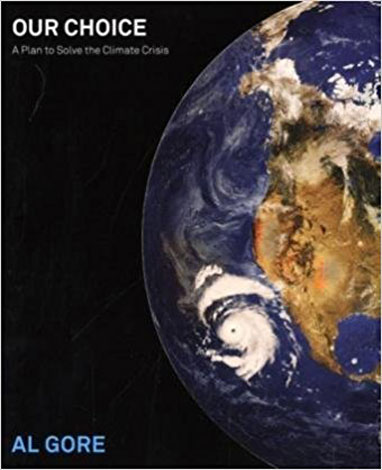
Our Choice
A Plan to Solve the Climate Crisis
Al Gore
We clearly have the tools to solve the climate crisis. The only thing missing is collective will. We must understand the science of climate change and the ways we can better generate and use energy.
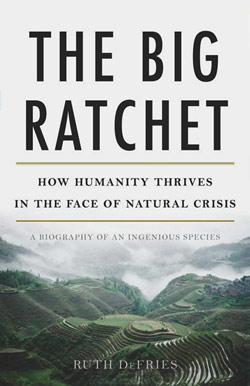
The Big Ratchet
How Humanity Thrives in the Face of Natural Crisis
Ruth DeFries
Human history can be viewed as a repeating spiral of ingenuity—ratchet (technological breakthrough), hatchet (resulting natural disaster), and pivot (inventing new solutions). Whether we can pivot effectively from the last Big Ratchet remains to be seen.
In the series: Not a Drop to Drink: Our Looming Global Water Crisis
Related articles:
Further Reading »
External Stories and Videos
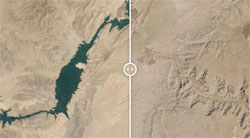
The world’s rivers are drying up from extreme weather. See how 6 look from space.
By Natalie Croker, Renée Rigdon, Judson Jones, Carlotta Dotto and Angela Dewan, CNN
The contrast in these rivers between 2021 and 2022 is alarming and starkly illustrates the growing effects of climate change.

Europe’s drought on course to be worst for 500 years, European Union agency warns
This year is set to be even worse than in 2018, when unusually favourable conditions in some parts of the bloc protected it from drought elsewhere, and the worst since the sixteenth century, a senior scientist working on the European Commission’s drought data warns.

The Lost River: Mexicans fight for mighty waterway taken by the US
Nina Lakhani, The Guardian
The Colorado traverses seven US states, watering cities and farmland. Before reaching Mexico, the river is dammed at the border, and on the other side the river channel is empty. Locals are now battling to bring it back to life.
